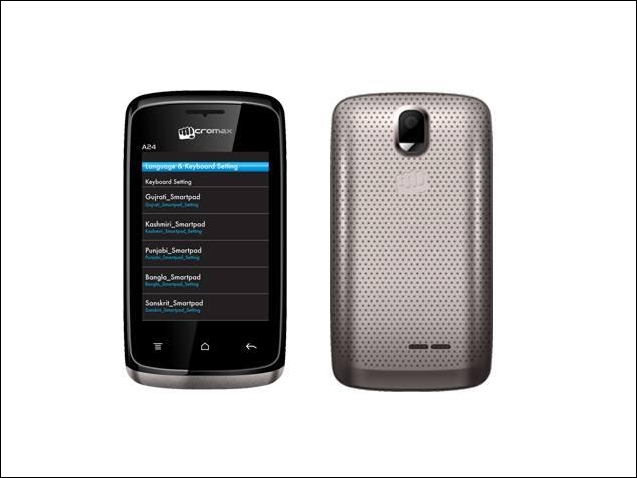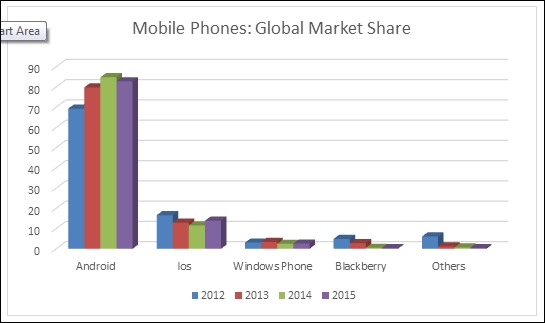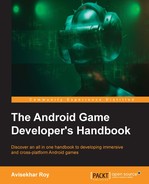The first commercially released Android device was the HTC Dream. In 2008, this mobile phone introduced a new Linux-based operating system, Android. Since then, thousands of manufacturers have been using Android for their devices. At first, Android became popular among mobile operating systems such as Symbian, Java ME, Blackberry, and iOS. New generation technology had a demand for a new, lightweight, user-friendly, and affordable operating system. Android fulfilled these requirements, and gained its momentum faster than Blackberry and other competing operating systems.
According to the latest market study, in the first quarter of 2016, Android holds 76% of the market share, which itself explains its success. With the passage of time, Android has expanded its territory from mobile to other useful hardware platforms like tablets, televisions, watches, consoles, and so on.
In this chapter, we will explore these platforms from the perspective of game development. Let's have a quick look at the topics we are going to cover:
- Exploring Android mobiles
- Exploring Android tablets
- Exploring Android televisions
- Exploring Android consoles
- Exploring Android watches
- Development insight on Android mobiles
- Development insight on Android tablets
- Development insight on Android television and STB
- Development insight on Android consoles
- Development insight on Android watches
- Each platform has its own specialty
- Going cross-platform for the same game
- Required limitation measurement before design
We will try to understand all platforms and their details in order to develop games. The modern world has witnessed that games are now not just limited to PCs or consoles. They have become a part of almost everything. So, it is very important for Android game developers to have a decent knowledge of all possible hardware that might be useful for gaming, and which opens up opportunities for few more.
Android mobile devices are the most important devices for game developers. Mobile technology has undergone a huge revolution during the last decade, from the black and white pixel phone to modern age smartphones. Currently, Android mobile devices are leading the market by a huge margin compared to its nearest competitor, the iPhone.
Initial Android gaming got its momentum after the release of Android version 1.6, followed by Android 2.3. Even today, there are many devices running on Android 2.3. That is why many of the popular cross-platform gaming engines support Android 2.3.
There was a time when Android used to run with a minimum requirement of 32 MB of RAM, 32 MB of disk space, and a 200 MHz processor as well. If we take a look at current device specifications, a drastic change can be noticed. Nowadays, Android mobile devices have 1 GB RAM, 1 GHz processor, and 4 GB disk space on an average. Most of the devices have multicore processing units. However, this rise did not simplify the life of the game developer; on the contrary, it increased the complexity even more.
Let's have a look at the specifications of a low-budget Android device with a comparatively low configuration. The following example table shows the configuration of a Micromax Bolt A24:
|
Processor |
Cortex A5 |
|
Speed |
1 GHz |
|
RAM |
256 MB |
|
Flash memory |
512 MB |
|
Screen mode |
NA |
|
Screen resolution |
480x640 |
|
Screen size |
2.8 inch |
|
Android version |
2.3 (Gingerbread) |
Here is what it looks like (image source: http://www.androided.in/wp-content/uploads/2014/02/Micromax-BoltA24.jpg):

Now take a look at a very high-budget Android device with a very high configuration. The following table shows the configuration of a Samsung Galaxy S6:
|
Processor |
Cortex A57 |
|
Speed |
2.1 GHz quadcore |
|
RAM |
3 GB |
|
Flash memory |
128 GB |
|
Screen mode |
NA |
|
Screen resolution |
1440x2560 |
|
Screen size | |
|
Android version |
5.0.2 (Lollipop) |
Here is what it looks like (image source: http://talishop.ru/data/big/eew.jpg):

Every Android game developer should be well aware of the fact that a single game build cannot achieve best performance across all configurations. It is pretty obvious that if the game runs well on a Micromax Bolt A24 device, then it will surely underperform on the Samsung Galaxy S6. By the word "underperform", we mean the quality of the game on Samsung Galaxy S6 would be far below expectations. So it is a very good line of thinking to have some idea on game portability. We will discuss this in detail later on.
The following chart shows the market shares of mobile phones since 2012:

As you can see, the majority of the market is captured by Android, and iOS trails behind with a huge gap in between.
The rest of the mobile operating systems such as Windows Phone, BlackBerry, Java, Symbian, Bada, QT, and others are nowhere near them. So, it can be predicted that the future mobile phone market will be dominated by Android and iOS.
The Android mobile market is getting bigger day by day. Both design and development is getting tougher, trickier, and more market-intense. Every day, around tens of thousands of new games are being launched for Android mobiles on stores like Google Play Store, Amazon App Store, a few career-specific stores, and many more individual online sites.
We have discussed earlier about the target audience of the game. While exploring Android mobile devices, we need to understand the user group. In most cases, the user category is recognized by the device configuration or the price group.
